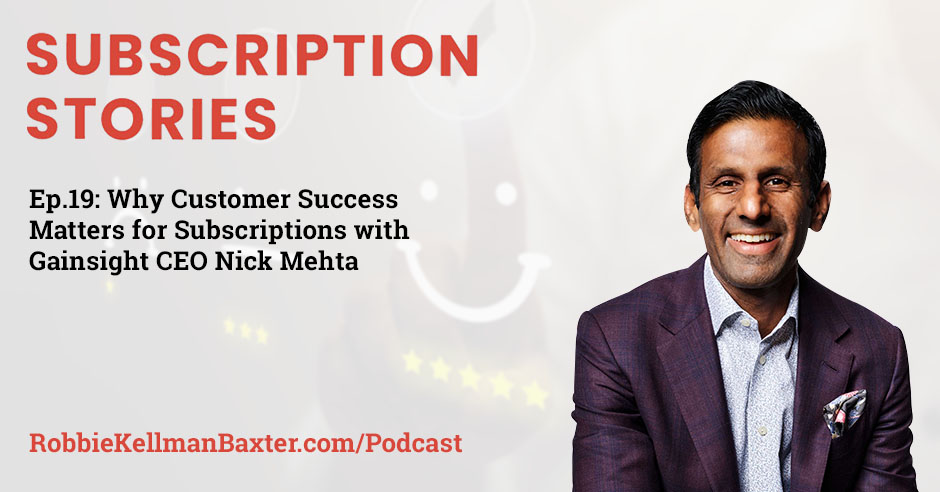
“The outcome you’re looking for in customer success is to get your customers to stay longer, spend more money, and be better advocates for you.” Nick Mehta, CEO of Gainsight, speaks to Robbie about the emerging discipline of customer success. They discuss how paying attention to customer success increases a subscription business’ customer lifetime value and how his SaaS company helps businesses in this regard.
With subscription models, acquisition is only the starting line. Organizations need to develop competence around onboarding new members, driving engagement, and expanding the relationship to maximize customer lifetime value. A whole new discipline has grown around this idea of “customer success,” often replacing customer support, and with a radically different focus. Customer success is about proactively ensuring that subscribers get the value they’re paying for. On this episode, Robbie speaks to Nick Mehta, CEO of Gainsight, often called The Customer Success Company. Nick is both an expert on the emerging discipline of customer success and the leader of a SaaS company that is forever dedicated to a promise of “helping businesses develop deep and lasting relationships with their customers.” They explore the secrets of customer success—what it is, why its growth so closely aligns to the rise of subscription-based businesses and Saas specifically, and how a customer success orientation can help dramatically increase your customer lifetime value, a key metric in the membership economy.
—
Listen to the podcast here:
Why Customer Success Matters For Subscriptions With Gainsight CEO Nick Mehta
A few years ago, I spoke for the first time at Gainsight’s Pulse Conference and was intrigued by the way the passionate community was investing in a new approach to customer interaction, which focused not on just solving the problem, but on optimizing the outcome for the customer. They called it Customer Success. Our guest is Nick Mehta, CEO of Gainsight, often called the Customer Success Company. It’s a meta-conversation. Nick is both an expert on the emerging discipline of customer success and the leader of a SaaS company that is dedicated to a forever promise of helping businesses develop deep and lasting relationships with their customers. We’re going to go deep on the discipline of customer success, what it is, why its growth closely aligns to the rise of subscription-based businesses and SaaS specifically, and how a customer success orientation can help dramatically increase your customer lifetime value. That is a key metric in the membership economy. Anyone who wants to build a forever transaction with customers can learn a lot from Nick. I’m thrilled to have him on the show.
—
Welcome, Nick.
Robbie, it’s great to be here. Thank you so much for having me.
Let’s start with the basics. How do you define customer success?
We believe customer success got created out of this transition that you talk about all the time to the subscription business model. In more transactional business models, the way to make money, it would be to build stuff and then to go sell it. That’s the two motions most companies got great at. That’s created a lot of the economy that’s out there. In a subscription business model is, as you know, better than anyone, if you build stuff, sell it and your customers leave, you don’t make any money because all that money comes over time and the lifetime value of the customer.
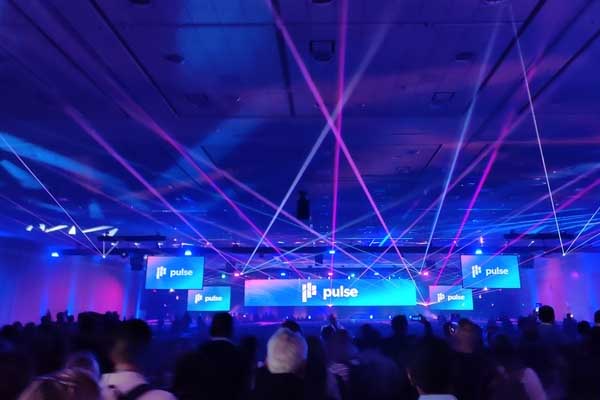
Customer Success: Customer success takes the customer-centricity of customer support and the business orientation of account management and turns them into a proactive business process.
This idea of what is my retention rate and very specifically, what’s my net retention rates, all those existing customers, are they shrinking? Are they growing? Are they leaving? Are they staying? That’s where the economics of any subscription business, whether it’s SaaS or cloud or subscription eCommerce or financial services, any subscription business, the economics are about net retention. How do you improve net retention? We’d argue it’s customer success. It’s making sure your customers have been onboarded well. They’re using your products and services while they’re using all the new stuff like the cool stuff that you’re innovating in.
They’re seeing and getting the value from your service they were hoping for. They become an advocate. In that process, they stay with you. They spend more money and they tell their friends. To do that, customer success is all about creating a new business process in your company. You still build stuff. You still sell stuff, but now you got to make sure your customers are successful. Part of that’s building a team in some companies like a customer success team. Part of that is automating the customer journey post-sale. Part of that is using analytics to understand how your customers are doing, and Gainsight builds products for all those areas.
How is that different from customer support? A lot of organizations say, “We already have customer support or we already have account management.” Is this a new thing? It seems like stuff that we’ve always done. Is it just semantics?
That’s a very natural question. It’s more of an evolution. It’s support and account management evolving into something new. In the old world, go back to that transactional business model. I built something. I sell it to you. What was my job after that? Two things, one is if it breaks, you call me. That’s the customer support. If your refrigerator breaks, you call the Maytag repair person. When you need to buy more stuff, then we chat. That’s the account management job. Those are like the two jobs that existed. Inherently, both of those jobs were a little bit more reactive.
At the end of the day, the customer has bought their stuff and they’re stuck with you. They spend all their money upfront. In the new world, you’ve got to be proactive after that customer journey. Think about how sales work. Sales isn’t reactive. They’re not like, “Call us when you’re looking to buy.” Salespeople don’t typically do that, maybe some do. Most of them are like, “Let me check in with you, let me take you through the process and let me help you.”
After the sales, somehow we all turn reactive. In the subscription business model, that doesn’t work because if we’re reactive, then that customer is not going to get value. They’re going to go do something else. We’re not going to make any money off that customer. We’ve got to be proactive after the sale. Customer success fundamentally is taking all that empathy and customer-centricity of support and all the business orientation of account management and turning them into this proactive business process.
In the new world, you need to be proactive when it comes to customer success. Share on XThe big idea that I hope people take away from this is that the heavy lifting starts at that moment of transaction. It’s, “I build the stuff and sell this stuff, now we can relax and celebrate,” but it’s like, “No, that is the starting line for the real work.”
We always joke, Robbie, that in B2B sales organizations, there’s this image. Some people do it. Sometimes it’s a story about when you close the deal, you ring a gong. That’s a common metaphor. You have a little gong in your office and you’re, “We just closed that deal.” You celebrate and exactly what you said, “That’s the beginning, not the end.” In the old transactional business model, it was the end. You got the money. The customer is stuck with you. It was the end, but it is the beginning. You said it well.
It creates a very different culture too because if that’s the beginning, then maybe the salesperson is not the hero or maybe not the only hero.
It’s interesting going back to your book. It’s not a one-and-done thing. It is a forever thing. It’s the infinity loop, all this stuff you talk about. It’s like forever that you have to be delivering value. It’s not like it ever ends. The salesperson isn’t the only hero. They’re still important. Sales is still hard. Marketing is hard, but it’s also very hard to get customers to value over time.
Speaking of the hard work of providing value over time, one of the things that you’ve done well is build community. When I spoke at your Pulse event a few years ago, I was completely blown away by the intensity and passion of the customer success professionals who attended and how this felt like their reunion, their annual meeting and their secret club all rolled into one. It was interesting to me because I started thinking, “This is almost like an association of its own.” I was curious how you see the role of community, both for Gainsight as it’s been a key part of your growth, but also as an element in ensuring customer success.
I could talk for hours about that. For us, our Pulse community, which we intentionally did not call the Gainsight community because it’s not about our technology, but about the whole career of customer success. It’s something we’ve been fortunate to be a part of. We launched it in 2013 and 300 people were there. The last in-person event, which now feels eons ago, May of 2019, we had 6,000 people there in San Francisco at the Moscone Center. In 2020, we did it virtual, it had 23,000 people. You’re totally right. It’s not just the numbers. It’s the energy. I’ve talked to thousands of them and they say, “The biggest thing is it’s not just the content or the speakers. It’s feeling like I’m not alone. I’m amongst my kindred soul spirits. It’s a reunion. It’s like the high school reunion, whatever analogy you want to use, all of them work.
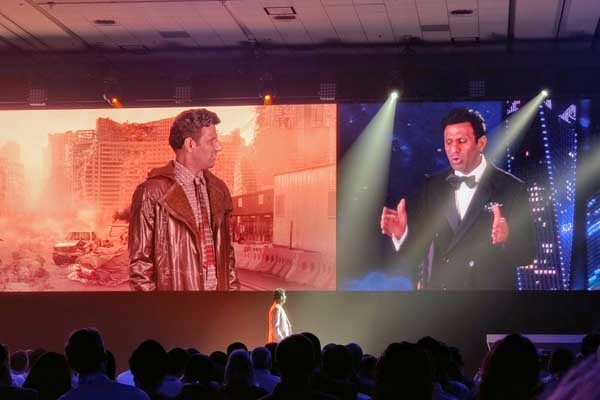
Customer Success: Customer success will feel like a whole new initiative, but eventually, the whole company will be reinvented around it.
We do try to bring our culture in some of our silliness to it which helps. That community-building both in that big event and I’ve hosted thousands of networking dinners and virtual events and everything you can imagine. People love meeting other people. It’s incredible how consistent that is. Translating to your second point then, what we’ve learned is not only is it relevant for our business, we think community is one of the most critical plays in customer success. One of the best ways to make your customer successful isn’t to tell them what you think they should do or share with them the best practices, it’s to let them meet other people and get other people to learn from.
We all know this in our walks of life. You’ve written many books now. Somebody wanted to come to you and write a book. They’ve learned a lot from you. The idea of learning from your peers versus let’s say learning from the publisher of the book. I’m sure you can learn from a publisher too, but learning from peers, there’s something that’s intangibly valuable about it. It’s also this feeling of not being alone. Many of our customers, when they think about customer success, community building is a massive part of it.
You mentioned that in 2020, the 23,000 was virtual. How do you keep up the energy in a virtual event to keep building that community?
It’s something we think about all the time. I have done a ton of in-person events and we love them. It’s not that we’re good at them and they drive business or our customer liked them. We enjoy them ourselves. We are passionate. We were planning our next one, which will be virtual again unfortunately because the pandemic moves on. When we think about virtual, one of the core things we wanted to do early on is not have it feel like a webinar. All of us have been on webinars and they’re fine. You multitask. You’ve got your slides up there, do your work. That’s fine but that’s a pretty low bar.
Our first virtual event was in the throes in the beginning. We were supposed to have our in-person Pulse 2020 Conference in May of 2020. In case you forget, it would be hard to do an in-person event in May of 2020. We had to like figure out how to get out of all the in-person stuff, which is millions of millions of dollars. We had to figure out how to do a virtual event. It was one of the first out there. I got to say, “I was proud of what we did.” We tried to bring one of our values, which is childlike joy, bring the kid to work every day. That’s one of our values. We always do in-person events, which is like we’ve had Vanilla Ice on stage. I’ve rapped very misguidedly on stage before.
You can’t un-see it once you’ve seen it. We did a Disney musical parody about customer success on stage. We’ve done all this fun stuff in the past. We were like, “How do we bring that to virtual?” We did. We did a whole music video opening, which was fine with our customers. We also tried to leverage some of the things you can do in the in-person format. For example, you try to make the customers, when we were filming them, include their home. We were a big part of it. We call it Pulse Everywhere, but a big part of it was Pulse in Your Home. Have them like bring their kids on the camera and in the sessions and like show around, what’s the room like. This is the beginning of pandemic, but all of that stuff was pretty novel. We did some of that, which is great. We did another big event in the fall around product people getting better at customer experience and again effective, another funny video and trying to bring our own energy to it. The next frontier to me is networking.
Always remember that there is a human being behind every email address and every transaction. Share on XAs we talked about community building, a lot of it is meeting your peers. That’s a little harder in the virtual world, but shouldn’t be impossible. We did a virtual event for executives in the summer like July, August timeframe. We call it CCO Summit. It’s for Chief Customer Officers. There’s a tiny bit of content. What we did was went into Zoom breakout rooms. We had facilitators and facilitated peer-to-peer discussion. It’s not as fun as sitting around with coffee, campfire or something, but people liked it. We did it in Europe as well. We’ve been doing some of this like using the breakout room functionality of Zoom or whatever technology you’re using and trying to let people connect with each other. There’s a lot more that could be done. Technology is innovating too, whether it’s Zoom or the hundred other platforms that help in virtual events.
Useful tips for almost anybody who’s trying to build relationships in this crazy time. I might change gears a little bit and talk about how customer success as a role has changed over the last few years. What it was a few years ago versus what it is now and the discipline of customer success. That was something that struck me. There’s this whole discipline of customer success professionals that is rising up. It wasn’t clear who that was going to be or what the profile was. It reminded me of product management in the ‘90s, which dates me a little bit. You could be a product manager coming out of engineering or coming out of marketing or say you were one. It’s a very clear discipline. The same thing is happening with the discipline of customer success.
I like the word discipline. That’s 100% true where it started out as people are doing support and there were maybe changing their LinkedIn title. There’s this cool new title. That’s always how things started. People just, “That’s a good title so I’ll get more job offers” or whatever. You had a lot of support people dressed up as customer success or to your point account managers dressed up as customer success. That’s great. That was a starting point. It wasn’t clear that it was a job and how do you define it. We tried to help our conference and some of our books. Not just us, lots of other people have contributed in professionalizing it and taking it through to the point now, if I go to the end, where in 2021, LinkedIn said it was the six most promising job in the world. It is a career.
I was speaking at like some Harvard Business School thing. They were like talking about how many HBS grads go into customer success. McKinsey, Bain, BCG go into customer success. It’s a real career at various entry points, which is awesome. It’s been professionalized. It went from that artisanal to that more scientific structured role like every job, like you talked about the product management. There are a few phases people have gone through. There’s this starting point where people have changed the title, but not change anything else.
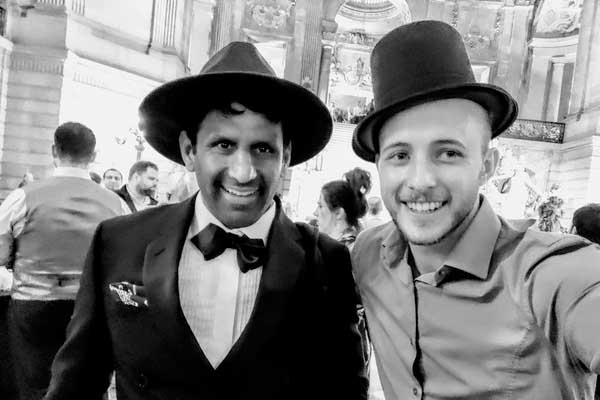
Customer Success: The outcome you’re looking for in customer success is basically to get your customers to stay longer, to spend more money, and be better advocates for you.
They were more reactive, more support on customer success. It’s not any different. What happened for a lot of companies is they went through these different three different phases of maturity. One phase was like, “Our job is to proactively get customers to use our products and technology.” People refer to that as adoption, like adopting the technology, using it, which is great. People figured out, “Most people don’t use technology just to use it.” They use it to get some business value, particularly in the B2B world. They’re buying a product because it’s going to help grow their revenue or reduce their costs or make their employees happy. There was this shift in focus from like, “It’s in the beginning that people use it,” to like, “Let’s get them to get value from it and see the value from it.”
The cutting-edge frontier is, “I want to get my customers to be experts, mature and great at using it so much so that they’ve made it ingrained part of their company and their identity. Some of that stuff is exactly their habits. Think of the stuff we use where it’s habitual that we don’t even think about whether it’s valuable or not. It’s part of what we do. Maybe we’re doing that right now with the Zoom software that we’re using right now. Most people don’t think about things like this anymore. It is what it is. How do you get to that point where it’s a habit? There’s this maturity curve that the industry has gone through and that we’re trying to take our customers through as well.
People that come into the subscription world from somewhere else don’t recognize right away way how different the entire culture is. It’s about that long-term relationship. That’s what you’re trying to build is those habits. Getting people to the point where they don’t even think about it, but that’s how they do whatever it is they do. That’s how I manage my relationships. This is how I connect with people during the day. Somebody asked, “I want you to call me.” I went to Zoom and then they weren’t there because my phone started ringing up like, “What is that?”
I’ve been doing some call it phone calls every now and then to mix it up. It’s always disarming to people. I know exactly what you mean. They’re like, “We’re not on Zoom.” People are so used to it. That’s the only option.
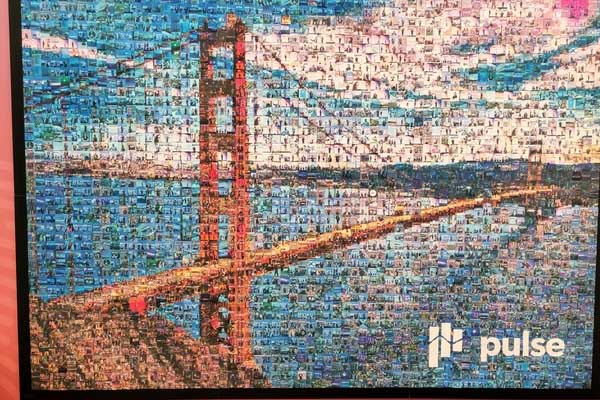
It’s important that the software exists. This is what I tell people now that are getting into the subscription world. The software is there. It can support these disciplines, these approaches, these processes. The most important thing is that as an organization, you need to understand that the gong is the starting bell, not the celebration bell. There’s a lot of work to do. What you’re trying to do, it’s not even about getting your customer to use your product. It’s about getting them to get the value that they paid for on an ongoing basis. That means you have to have different metrics, processes and team members. You might need to design your products differently. Don’t think that just because you call this person a customer success person, you sell on an ongoing basis with subscription pricing that you have a fast business or a subscription business.
A lot of our clients are companies that went from that trend through that transition. I know you’ve worked with companies like that too where they used to sell physical products or software or whatever. Now they’re selling SaaS subscription cloud. Almost all of them, the starting point is, “We put it up in the cloud,” or it’s a subscription thing and they’re doing everything else the way they used to do it. Everything else is the old model and they haven’t changed, the mindset changed, the organization changes, the processes. They’ve changed the actual product or delivery. That’s it and that’s the beginning.
It’s such a small piece of it. Something that I’m finding interesting is like you, I’m based in Silicon Valley. I grew up here. I’ve been here since I was four. I grew up in Menlo Park. Silicon Valley has always been around me and I’ve always worked with software companies. I had friends at software companies. SaaS was something that I saw rising up. Many of my early clients were SaaS startups, venture-backed, fast-growing, digital natives building B2B businesses. A lot of my subscription ideas came from as well as working with some consumer companies as well like Netflix and others. What I’m noticing now is that a lot of the principles that have been so powerful with SaaS companies are relevant for any businesses trying to build a long-term relationship with their customer. I would love to hear your thoughts on that as you think about all of your expertise and what you know about customer success and about how SaaS businesses thrive? What it might mean for consumer businesses, eCommerce businesses, people that are trying to sell pharmaceuticals on a subscription direct to the consumer. How do you think about that?
We think of the world as being very binary, for example, either subscription or not subscription, or you think of software or not software or digital or not digital. What the last couple of years have shown is it’s much more of a continuum and a mix. This idea underlying it all is going to apply to your business no matter where you are. Underlying idea is, for me, at least, it’s not about subscription. It’s not about cloud. It’s not about pay-per-use businesses. It’s about this transfer of power from the businesses to their customers. That’s the basic underlying shift that’s happened where digital technologies have made it much easier for customers to find things that they want, to compare things, to buy things that they want, to switch.
In the old world, we habitually bought a car and drove it for seven years. We went to the same store because it was in our neighborhood. We bought from the same salesperson because that’s the person we knew. We didn’t know about all the other options out there. It was hard to switch. Why would we want to? We were in the same job for 20 or 30 years. Everything was very fixed. In this new dynamic world, because of technology, the customer is constantly in power. They constantly have options to do different stuff. That’s true in subscription. It’s true everywhere. eCommerce is the most extreme. Every single click, every purchase, the customer has choice of where to go.
Media is the same way and financial services. The choice is bound for the customer. Power is in the customer’s hands. The customer is not beholden to you. It doesn’t matter what business model. What’s interesting is that the business models themselves are going to become hybrids. On one hand, you have these transactional product-based business models adopting SaaS cloud subscriptions. On the other hand, you have subscription business models that have some elements that are more transactional. For example, you might have a subscription model, but they also make money based on how much payment volume they send through your system.
There’s a lot of these subscription companies that also manage the payments for your business. They make a slice of every payment. That’s a little bit more transactional. You have subscription companies that are price based on how much you use, not a fixed price per month. This idea of, either subscription or not, it’s going to blur together. The much bigger concept is your customer has power. You’re trying to manage that recurring relationship with your customer. There’s a better word than recurring, but that’s the one that I can think of and used a lot, which is you’re trying to make it not a one-and-done thing. It’s an ongoing relationship.
You want to maximize that lifetime value. Some of it might be a subscription. Some of it might be purchases every now and then. How do you get them to buy more often? How do you get them to buy at higher rates? eCommerce companies, as an example, have always thought about this. That’s a concept that they’ve thought about, but trying to make that the spirit of the businesses like recurring customer relationships, that’s the long-term idea here.
You’ve always been a real advocate for customer centricity and for a focus on the long-term, a real groundbreaker in that space. It’s important to remember that even when we’re getting into the weeds on, “Should I use this software platform or that process? How do I price my subscription?” which is what everybody wants to talk about that it’s important to say, “The customer has power. I need to optimize for their needs and I need to do it in such a way that they’ll keep coming back.” If they keep coming back because they’re paying on a subscription, great. If they keep coming back because I’m their habit, that’s also great.
I think about Apple and how for many years they didn’t even offer any subscriptions. They sell hardware, but yet people would say, “I’m an Apple person.” If you went to their store, they were like, and I’m paraphrasing, “Our promise to you is if you buy only our products, they will all work together. If you bring in some other product that we did not make, or at least did not recommend, we can’t help you. If you trust us, we will go to the end of the earth for you if you only buy from us.” It’s that mindset, whether it has a subscription attached or not, whether it’s in the cloud or a physical product or a service, it’s about that relationship.
Apple’s a great analogy. I’m a subscriber to new iPhones and that I don’t have a subscription with them, but I buy the new iPhone. It’s a habitual thing. A lot of people are like that. It’s a good analogy.
Some of the people that are reading are in the process of setting up their customer success practice in their organizations. What are the metrics that are important for them to track, understand whether they’re on the right journey to building that relationship?
There are six metrics. I’ll give you some of the basic ones and then some of the more advanced ones. The outcome you’re looking for in customer success is to get your customers to stay longer, to spend more money and to be better advocates for you. Those are the three levers. Getting customers to stay longer and to leave less and to turn less, turn is the term people use a lot, people often measure something called the gross retention rate. It’s a very arcane terminology. It means if a set of customers a year ago were spending $100 collectively across all of them, a year later, those same customers without adding any incremental purchases they made, just the existing stuff they had. Is that $100, $95, 5% of them left, or is it $93 or is it $91 or is it $85? That number is so critical to the viability of your customer base. If you get new customers, you spend all this money to get them and they leave out the back door, then you’re never going to make money. That’s gross retention rate.
The second one is the net retention rate. It’s the same content, but including the benefit of customers buying more stuff. That same $100, is it now $120? Some customers left, but other ones started spending more money. That idea of like, “Are my customers going to grow even if I don’t get any new ones?” The third one, which you know and a lot of people know or have heard about, is called net promoter score, which is this measure of customer advocacy, loyalty and how likely they are to recommend you to your friend?
I had as a guest, Stu Berman, who runs the NPS Loyalty Forum for Bain. If people are interested in going deep into NPS, I suggest you check out that episode.
You can start thinking about, “What are the leading indicators for those?” Those are the three business metrics you might be optimizing for. People start saying, “I want to measure of the likelihood of my customer to stay with me and grow or renew,” and people will call that a customer health score. Knowing the past is great. Did my customers renew? What about the future? How do I figure out? Which ones are at risk? Customer health score is a huge thing that a lot of people have been investing in. That’s an area we focus on. Another one is metrics around adoption of your technology if you have a technology or you’re into business. Some people will say, “Daily active users or weekly active users,” and there’s a lot of more sophisticated metrics that would be around that.
That one doesn’t have to be technology. If you’re a newspaper reader, are they reading the newspaper every day, if you’re a learning organization, are your team members using whatever professional development resources you make available to them?
That’s so well said. It ties to your point about habits too. It gets into this question of, is it habitual or not? That’s a very good observation. The last one the people will measure over time is “I want to get efficient at this stuff too. I don’t want to do it with if I have an army of people.” People measure the cost of retention. For every $1 of recurring subscription type revenue I have, how much am I spending to keep them? Am I spending $0.05? Am I spending $0.10? Am I spending $0.50? That would be a problem. How much are they spending to retain that customer? Those are the six metrics that we see a lot.
Some of those are less known like that last one, cost of retention. How does somebody calculate that?
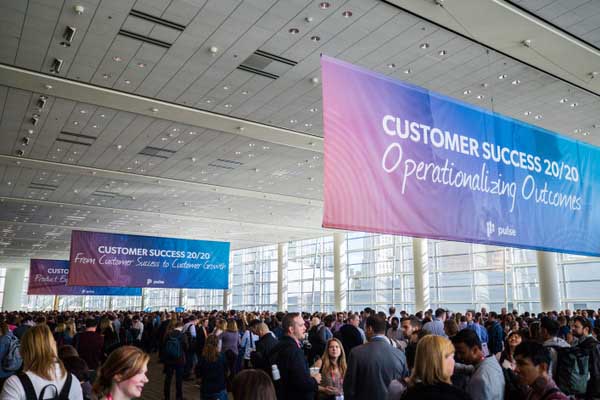
The numerator will be the cost that they’re investing after the sale to keep that customer. That cost could be customer success managers. For example, imagine you have a customer success manager, they’re making a certain salary and they’re managing 30 accounts. You can amortize the cost across those accounts. There are also all the operational systems, automation, technology to go manage these customers, maybe with a more digital type approach. You’re adding up the people costs and then the process systems, operational stuff, that’s your cost. On the denominator is your recurring revenue. In different businesses, that’ll be a different metric. In the SaaS software world, people refer to annual recurring revenue or monthly recurring revenue so that would be the denominator.
It’s specific and useful. Thank you for going into those. Nick, I want to ask for your advice, what would you say to an entrepreneur or an executive who’s trying to build a customer-centric organization and optimize for that long-term relationship?
Any transformation in a company is challenging. The advice, which is going to be so generic, is that it’s going to take time. You got to go in steps, crawl, walk, run, have patience, which is it’s true and a truism at the same time. If I had to give an analogy, what I like to tell people is this new transition, initially, it will feel like a new organization and a new initiative. The whole company will be reinvented around it. As with you, I’ve been working for a while so I can think back to some of the older days. Think about the late ‘90s and the internet when you and I were working.
The internet was a new thing so they would have an internet division of the company. That internet division would be the head of the internet division. They would feel like people don’t get it. They’re not focused on this. They’re trying to transform the company, but they’re not getting enough resources. Everyone’s still doing their old stuff. Now, it would be so crazy for a company to have an internet division. Everything is the internet. I believe that the same thing’s going to happen.
That’s the thing you can look forward to is one day your whole company will be about customer success, customer centricity, the subscription business model. Your whole company will be that. There’s no doubt in my mind. When you look at companies that are fully transitioned, let’s say Adobe is a big company that’s transitioned or Microsoft, the whole company is about that now. There’s no more like, “Should we do this?” If you’re in those early days where it feels like your system is pushing the rock uphill, you will get to the top of the mountain and it will start rolling downhill, so have faith.
Does that mean that at some future date, your ideal scenario would be that there are no longer customer success divisions because everybody does that wherever they sit?
The vision we have is it will end up being like sales. It’s not like we got to the point where companies said, “Everyone’s in sales.” We don’t need salespeople. You still need people orchestrating that sales process, but nobody questions anymore, “Why do we need salespeople or does salespeople add any value?” Some people might question that every now and then. In a general sense, that doesn’t get questions part of the business model. What’ll happen is customer success will become part of the business model. There will still be a team that’s orchestrating the process, but there’ll be getting a lot more support from product management, sales, finance, marketing because everyone will be supportive of the initiative.
I like to do a speed round. Are you up for that to close out? The first subscription you ever had?
Columbia House Records. That is a very dated concept, but this was a thing in the ‘80s. Music was hard to get back then. As a little kid without of money, you sign up for this thing. I forget you put a certain amount of money per month and you get a subscription of a CD every month. That was massive.
It’s 13 for $0.01. Favorite subscription you’ve used this week?
It’s funny because I’m sure you’re like me where everything is a subscription. I would say Peloton. I’m one of those annoying, crazy Peloton fans. That would probably be mine.
The last time you felt like you belong to an organization.
This customer success stuff at Gainsight, I do feel like it gives me a sense of belonging.
Your favorite way to say thank you to your best customers?
One of the things I’ve told some of our best customers is, and it’s a very specific type of customer. I’ll tell you two different things. One is I tell them that I appreciate the customers that don’t tell us like, “Things are great or we’re so happy,” but want us to be great. They want to give us that critical feedback about how we can be great. That’s something that I appreciate. Practically what we try to do is one of our philosophies of businesses, we call Human First Business. Always remember there’s a human being behind that email address and that transaction or whatever. We’re very big in trying to understand who they are. When I do a networking event, I’ll have an icebreaker question like “What was your childhood dream?” They’ll say they want to be a cop. I’ll send them a gift related to being a police person or being a fire person or whatever. I try to get to the human side of them if I can.
I’m going to end there with a human first focus and maybe an encouragement of everybody reading to try to think about the human being behind the email as Nick suggests so wisely. Thank you so much, Nick, for being a guest on the show. It’s been a real pleasure.
Thanks, Robbie. It was awesome talking to you. I’ll see you on Peloton. Thanks.
—
That was Nick Mehta, CEO of Gainsight. For more info about Gainsight, go to Gainsight.com. If you liked what you read, please take a moment to write a review and give us a star rating, and mention Nick’s interview if you especially enjoyed it. Reviews matters so much in helping others find us. Thanks for your support. Thanks for reading.
Important Links:
About Nick Metha
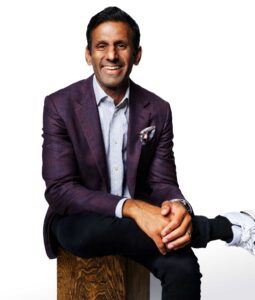 Nick Mehta (he/him), is the CEO of Gainsight, The Customer Success Company—a five time Forbes Cloud 100 recipient. He works with a team of nearly 700 people who together have created the customer success category that’s currently taking over the SaaS business model worldwide. Nick has been named one of the Top SaaS CEOs by the Software Report three years in a row, one of the Top CEOs of 2018 by Comparably, and was named an Entrepreneur Of The Year 2020 Northern California Award winner. On top of all that, he was recently rated the #1 CEO in the world (the award committee was just his mom, but the details are irrelevant).
Nick Mehta (he/him), is the CEO of Gainsight, The Customer Success Company—a five time Forbes Cloud 100 recipient. He works with a team of nearly 700 people who together have created the customer success category that’s currently taking over the SaaS business model worldwide. Nick has been named one of the Top SaaS CEOs by the Software Report three years in a row, one of the Top CEOs of 2018 by Comparably, and was named an Entrepreneur Of The Year 2020 Northern California Award winner. On top of all that, he was recently rated the #1 CEO in the world (the award committee was just his mom, but the details are irrelevant).
He is a member of the Board of Directors at F5 and has also co-authored two books on the customer success field, Customer Success: How Innovative Companies Are Reducing Churn and Growing Recurring Revenue, and The Customer Success Economy: Why Every Aspect of Your Business Model Needs A Paradigm Shift. He is passionate about family, football, philosophy, physics, fashion, feminism, and SaaS customer success. People told him it’s impossible to combine all of those interests, but Nick has made it his life’s mission to try.
Love the show? Subscribe, rate, review, and share!


